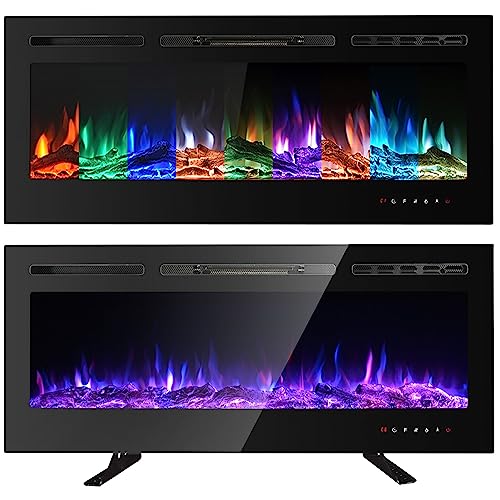Wall Fireplace Explained In Fewer Than 140 Characters
The Rise of In-Wall Fireplaces: A Modern Approach to Cozy Living
In-wall fireplaces have surged in appeal over the past couple of years, redefining standard heating approaches and home aesthetic appeals. These sleek and stylish components not only supply warmth however also combine performance with visual appeal, functioning as stunning centerpieces in modern living areas. This article checks out the numerous advantages, types, setup processes, and considerations concerning in-wall fireplaces, while addressing some regularly asked concerns.
What is an In-Wall Fireplace?
An in-wall fireplace, also called an integrated fireplace, is a fireplace that is effortlessly incorporated into the wall of a home, saving area while providing a modern-day visual. These fireplaces can operate on gas, electricity, or wood, depending on individual preferences and home requirements.
Types of In-Wall Fireplaces
In-wall fireplaces can be found in several types, each serving different requirements and preferences:
Gas Fireplaces:
- Use gas or lp.
- Deal immediate heat with adjustable flame settings.
- Require venting options.
Electric Fireplaces:
- Use electricity to create a synthetic flame.
- Can be set up in spaces without a chimney.
- Supply simple temperature level control and often included customizable features.
Wood-Burning Fireplaces:
- Provide a traditional and rustic charm.
- Need a chimney for venting smoke.
- Offer the genuine experience of burning wood.
Ethanol Fireplaces:
- Use bio-ethanol, a renewable energy source.
- No need for venting or gas lines.
- Eco-friendly and available in different styles.
Benefits of In-Wall Fireplaces
In-wall fireplaces offer various advantages over traditional freestanding models, making them an appealing option for many house owners:
Space-Saving Design:
- They fit flush against the wall, making them perfect for smaller spaces or modern homes where floor space is a premium.
Boosted Aesthetics:
- They act as striking visual aspects, creating a contemporary, tidy look that can improve any room's design.
Increased Property Value:
- An in-wall fireplace can substantially increase the worth of a property, making it an appealing function for potential homebuyers.
Enhanced Heating Efficiency:
- Many contemporary in-wall fireplaces are created to be more energy-efficient, resulting in lower energy costs and much better heat circulation.
Modification Options:
- Customized styles and surfaces can complement any home design, permitting individual expression.
Installation Considerations for In-Wall Fireplaces
Before setting up an in-wall fireplace, house owners should think about various factors:
Building Codes:
- Understanding regional building codes and guidelines is crucial, specifically worrying venting requirements for gas or wood-burning alternatives.
Space and Ventilation:
- Determining the amount of area available and ensuring correct ventilation are necessary for effective operation.
Electrical Work:
- For electric and ethanol fireplaces, consider existing electrical systems and whether additional wiring is required.
Heat Resistance:
- Ensure materials utilized in the setup are heat-resistant to prevent hazards.
Assessment with Professionals:
- Consulting with a certified installer or specialist can help ensure that the fireplace satisfies all security standards and functions successfully.
Contrast Table of In-Wall Fireplace Types
Type
Set up Cost
Upkeep
Heat Output
Ventilation Needs
Gas Fireplaces
Moderate
Low
High
Required
Electric Fireplaces
Low
Extremely Low
Moderate
Not Required
Wood-Burning
High
Moderate
Very High
Required
Ethanol Fireplaces
Moderate
Low
Moderate
Not Required
Frequently Asked Questions about In-Wall Fireplaces
1. Are in-wall fireplaces safe?
Yes, when set up correctly and maintained regularly, in-wall fireplaces are safe. It's vital to follow all setup guidelines and security suggestions.
2. How do I select the best type of in-wall fireplace?
Consider aspects such as your heating needs, looks, budget, and readily available setup space. Each type has its advantages and considerations.
3. Can I install an in-wall fireplace myself?
While little electric fireplaces may be DIY-friendly, gas or wood-burning systems generally require professional setup to comply with security codes.
4. How much does it cost to install an in-wall fireplace?
Expenses can vary commonly based on the type of fireplace, installation complexity, and local labor rates. On average, setup costs range from ₤ 1,500 to ₤ 5,000 or more.
5. Do in-wall fireplaces require ventilation?
Gas and wood-burning fireplaces generally require appropriate ventilation to expel exhaust fumes, while electric and ethanol models normally do not.
In-wall fireplaces provide a contemporary option to heating and styling an area, integrating aesthetic appeal with functionality. With fireplacesandstoves and numerous aspects to consider during setup, house owners can discover an in-wall fireplace that fits their way of life and enhances their living environment. As the pattern continues to grow, these fixtures are proving to be a clever investment for modern homes. Whether selecting gas, electric, wood-burning, or environment-friendly ethanol choices, an in-wall fireplace can include heat, character, and appeal to any setting.
